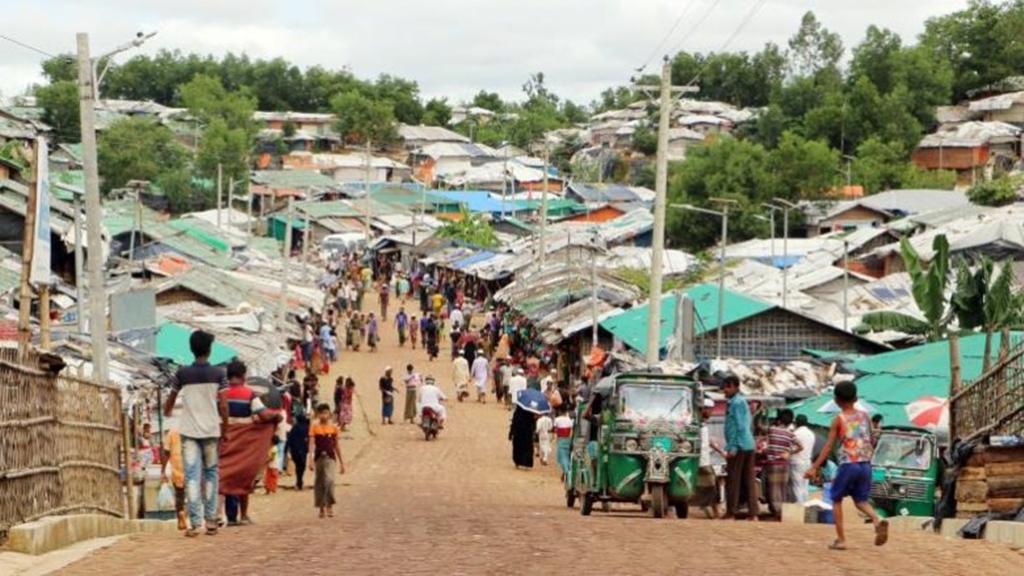
Myanmar: Imagery Shows 200 Buildings Burned
- 26/05/2020
- 0
By Human Rights Watch
Independent Inquiry Needed in Embattled Rakhine State
(Yangon) – Satellite imagery shows that about 200 homes and other buildings were destroyed by fire on May 16, 2020, in Myanmar’s embattled Rakhine State, Human Rights Watch said today. An impartial investigation is urgently needed to determine responsibility for this mass destruction of residential property in the predominantly ethnic Rakhine village of Let Kar, Mrauk-U township.
Since January 2019, fighting between the Myanmar military and the ethnic Rakhine Arakan Army has resulted in numerous civilian casualties and destruction of civilian property. The imagery of Let Kar bears a close resemblance to patterns of fires and widespread arson attacks by the Myanmar military on ethnic Rohingya villages in Rakhine State in 2012, 2016, and 2017, Human Rights Watch said.
“The burning of Let Kar village has all the hallmarks of Myanmar military arson on Rohingya villages in recent years,” said Phil Robertson, deputy Asia director. “A credible and impartial investigation is urgently needed to find out what happened, punish those responsible, and provide compensation to villagers harmed.”
Satellite imagery recorded on May 16, 2020 at 10:30 a.m. shows no signs of damage in Let Kar. But at 2:12 p.m., an environmental satellite detected extensive fires burning there. The Human Rights Watch damage analysis of 200 buildings burned is most likely an underestimate as internal damage to buildings is not visible.
[twenty20 img1=”25862″ img2=”25863″ offset=”0.5″ before=”Before: Satellite imagery recorded on May 16, 2020, at 10:31 a.m. local time shows no signs of damage in Let Kar village, Mrauk U, Rakhine State. Almost four hours later, at 2:12 p.m., an environmental satellite detected fires burning in Let Kar.” after=”After: Satellite imagery recorded on May 18 shows approximately 200 buildings affected by fire in Let Kar. The damage reported is most likely an underestimate as internal damage is not visible. Damage analysis by Human Rights Watch; satellite imagery © 2020 Planet Labs “]
Before: Satellite imagery recorded on May 16, 2020, at 10:31 a.m. local time shows no signs of damage in Let Kar village, Mrauk U, Rakhine State. Almost four hours later, at 2:12 p.m., an environmental satellite detected fires burning in Let Kar. After: Satellite imagery recorded on May 18 shows approximately 200 buildings affected by fire in Let Kar. The damage reported is most likely an underestimate as internal damage is not visible. Damage analysis by Human Rights Watch; satellite imagery © 2020 Planet Labs Before: Damage analysis by Human Rights Watch; satellite imagery © 2020 Planet Labs After: Damage analysis by Human Rights Watch; satellite imagery © 2020 Planet Labs
(Yangon) – Satellite imagery shows that about 200 homes and other buildings were destroyed by fire on May 16, 2020, in Myanmar’s embattled Rakhine State, Human Rights Watch said today. An impartial investigation is urgently needed to determine responsibility for this mass destruction of residential property in the predominantly ethnic Rakhine village of Let Kar, Mrauk-U township.
Since January 2019, fighting between the Myanmar military and the ethnic Rakhine Arakan Army has resulted in numerous civilian casualties and destruction of civilian property. The imagery of Let Kar bears a close resemblance to patterns of fires and widespread arson attacks by the Myanmar military on ethnic Rohingya villages in Rakhine State in 2012, 2016, and 2017, Human Rights Watch said.
“The burning of Let Kar village has all the hallmarks of Myanmar military arson on Rohingya villages in recent years,” said Phil Robertson, deputy Asia director. “A credible and impartial investigation is urgently needed to find out what happened, punish those responsible, and provide compensation to villagers harmed.”
Satellite imagery recorded on May 16, 2020 at 10:30 a.m. shows no signs of damage in Let Kar. But at 2:12 p.m., an environmental satellite detected extensive fires burning there. The Human Rights Watch damage analysis of 200 buildings burned is most likely an underestimate as internal damage to buildings is not visible.






